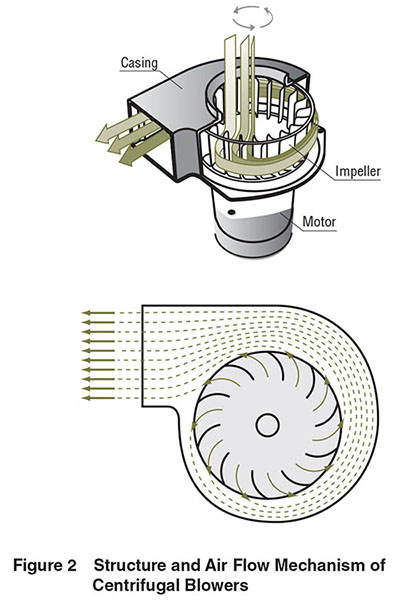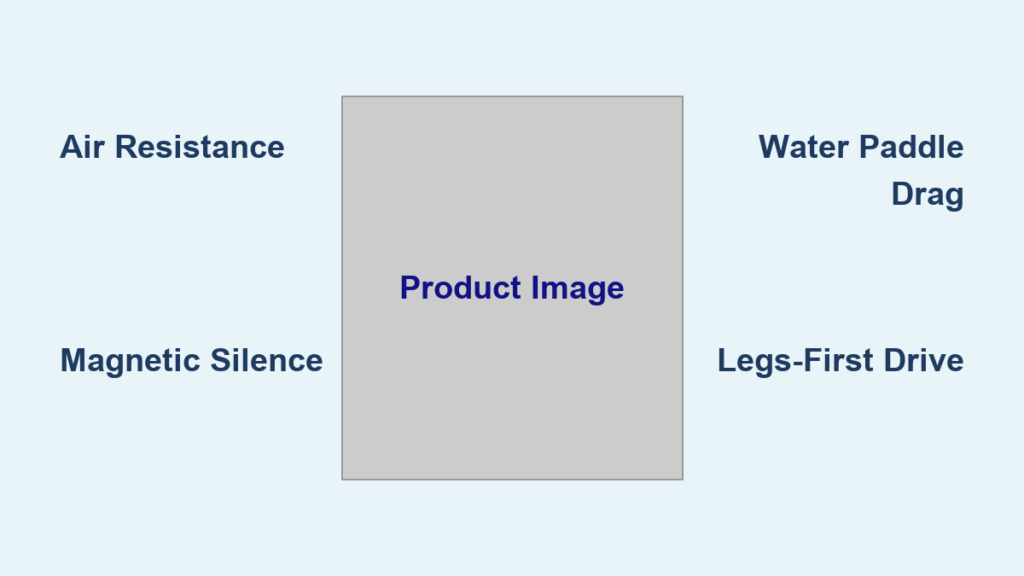You strap in, lean forward, and pull. The handle glides, the flywheel spins, and your split time drops—but what actually happens inside that machine? If your rower feels like a mystery box converting sweat into meaningless numbers, you’re not alone. Most users miss how resistance systems transform muscle power into measurable performance. Understanding how a rowing machine works unlocks smarter training, injury prevention, and precise intensity control—whether you’re using a $200 hydraulic model or a $1,300 Concept2. This guide reveals the engineering secrets behind every stroke so you can row with purpose, not just exhaustion.
Forget vague “ergometer basics.” We’ll dissect the physics of air dampers, magnetic fields, and water paddles using real biomechanics. You’ll learn why damper settings lie about resistance, how watts translate to calorie burn, and the exact muscle sequence that prevents back strain. By the end, you’ll manipulate drag factors like an engineer and optimize every stroke phase for maximum results.
Why Air Rowers Don’t Work Like Bike Resistance

Air rowers create resistance through physics—not brakes. When you pull the handle, you spin a fan cage where air molecules collide with blades. Crucially, resistance increases exponentially with speed: double your pull force, and resistance quadruples. This mirrors real water rowing where boat speed dictates drag. The damper lever (1-10) merely controls airflow to the fan—not direct braking.
How Damper Settings Actually Function
- Damper 1-3: Minimal airflow restriction. Simulates a racing shell’s sleek glide (ideal for technique drills)
- Damper 4-6: Balanced airflow for general fitness (optimal power transfer—most athletes use this range)
- Damper 7-10: Maximum airflow restriction. Creates barge-like resistance that strains your back without building power
Critical mistake: Setting damper to 10 “to get stronger.” This actually reduces leg drive efficiency by forcing premature arm pulling. Always verify your true resistance with the “Check Drag Factor” feature (110-140 for adults). Dust buildup or altitude changes can skew damper readings—this metric accounts for real-world variables.
Magnetic Resistance: Why Silence Costs Realism

Magnetic rowers like Peloton Row position a metal flywheel between magnets. As you pull, eddy currents in the metal create silent braking force. Unlike air systems, resistance here stays constant regardless of stroke speed—you pre-select intensity electronically.
Key limitations versus air resistance:
- No stroke-speed feedback: Pulling harder won’t increase resistance mid-stroke (unlike water or air)
- Artificial feel: Lacks the “water-like” momentum carry-over between strokes
- Precision benefit: Enables exact interval programming (e.g., 26 resistance levels for HIIT)
Pro tip: Magnetic systems excel for apartment living but require technique adjustments. Since resistance doesn’t ramp with power, you must consciously mimic the drive-phase sequence: legs → body → arms.
Water Rowers: The Physics of Paddle Drag
Water tanks use paddle displacement physics. As you pull, the paddle pushes against water mass, creating resistance that follows cube-law: double your speed, and resistance increases eightfold. This generates the most authentic on-water feel with smooth momentum carry-over.
Adjusting Resistance Correctly
- Add water: Increases mass, simulating a heavier boat (slower acceleration, harder recovery)
- Remove water: Decreases mass for racing-shell responsiveness
- Never fill beyond 75%: Causes splashing that disrupts resistance consistency
Warning: Algae growth in stagnant water alters resistance. Add purification tablets every 6 months and top off evaporated water quarterly—don’t just refill completely.
Four-Phase Stroke Mechanics: Where Power Is Really Generated

Your rowing machine measures watts, but 80% of that power comes from one phase. Most users waste energy by missequencing the stroke.
Drive Phase: Legs First or Fail
- 0-70% extension: Quads/glutes drive 60-80% of total force through heels
- 70-100% extension: Torso swing contributes 15% (core stability critical here)
- Final 30%: Arms add only 5-20%—pulling handle to lower ribs
Why early arm pulling destroys efficiency: Starting the arm pull before legs reach 70% extension shifts load to smaller muscles. You’ll gas out at 500m while proper sequencers hit 2,000m strong.
Finish Position: Peak Power Moment
At full leg extension with handle touching sternum, your machine registers highest wattage. Keep wrists flat—bending them at the finish strains elbow tendons. This position should feel like a controlled “punch,” not a collapse.
Recovery Sequence: The Speed Secret
Reset in exact reverse:
1. Arms extend fully before torso moves
2. Torso hinges forward before knees bend
3. Slide forward only after arms/torso are set
Mistake to fix: Raising knees before arms clear forces the handle over your knees, shortening stroke length by 6-8 inches. Repeat silently: arms → body → legs during recovery.
Split Time vs. Watts: Which Metric Actually Matters

Your monitor displays split time (e.g., 2:05/500m), but this is merely a speed proxy. Watts measure true power output—the only metric unaffected by damper settings or machine type.
Why watts beat split time for training:
- Accurate progression: 250W today = same effort tomorrow (unlike split time, which fluctuates with fatigue)
- Calorie precision: Machines calculate burn based on watts + body weight (296-900 kcal/hour)
- HIIT effectiveness: Target 80% max watts for intervals—not arbitrary split times
Elite benchmark: 500W = world-class sprint effort. Most fit adults sustain 200-300W for 2,000m. Track your watt progression weekly for real fitness gains.
Common Form Errors That Sabotage Performance
Over-Compression at Catch
Letting shins pass vertical (knees behind toes) creates hip impingement. Power drops 18% because your glutes can’t engage. Fix: Stop sliding when shins hit perpendicular to floor.
Rounded Back During Drive
Thoracic kyphosis (curved upper spine) multiplies disc shear forces by 3x. Fix: Brace core before initiating drive—as if bracing for a punch. Keep chest “proud” throughout.
Damper 10 Misconception
Using max damper for “strength training” forces jerky strokes that strain shoulders. Fix: For strength emphasis, use damper 7 with slower stroke rate (18-20 SPM), not max resistance.
Resistance Selection Guide for Your Goals
| Goal | Resistance Type | Settings | Stroke Rate | Key Focus |
|---|---|---|---|---|
| Beginner Technique | Air | Damper 3-4 | 18-20 SPM | Legs-first sequencing |
| General Fitness | Magnetic | 30-40% resistance | 22-24 SPM | Steady 2:20-2:30/500m |
| HIIT Intervals | Water | 75% tank fill | 30-34 SPM | 30s max watts / 90s easy |
| Strength Focus | Air | Damper 7 + 2:10/500m pace | 18-20 SPM | Full leg drive extension |
Critical note: Never exceed damper 8 for sets over 500m—higher settings degrade stroke mechanics without boosting power.
Maintenance Secrets Machines Don’t Tell You
Air Rowers: Beyond Chain Lubrication
- Vacuum fan cage monthly (dust buildup alters drag factor)
- Check chain tension: Should deflect ½” at midpoint—too loose causes slippage, too tight strains bearings
- Store monitor upright to prevent battery drain
Water Rowers: Avoid Algae Disasters
- Purification tablets must be added every 6 months (chlorine-free only)
- Top off evaporated water with distilled H2O—tap water minerals cloud tanks
Magnetic Systems: Silent Killers
- Inspect belt tension annually (loose belts cause erratic resistance)
- Wipe rail tracks weekly—dust creates “sticky” recovery
Why Your Rowing Machine Isn’t Broken (It’s Physics)
When resistance feels “off,” it’s rarely mechanical failure. Air rowers slow in cold rooms (dense air = more drag). Water rowers feel lighter when water warms (less viscous). Magnetic units lose strength near electronics (magnetic interference). Always rule out environmental factors before calling service.
Mastering how a rowing machine works transforms it from exercise equipment into a precision training partner. Air resistance delivers the most authentic feel but demands damper awareness. Magnetic systems offer apartment-friendly silence at the cost of water-like momentum. Water rowers provide aesthetic immersion but require tank maintenance. Regardless of type, all machines obey the same biomechanical truth: power comes from legs-first sequencing, not arm pulling.
Apply these physics insights immediately: Next session, set damper to 4, verify drag factor 120, and drill legs → body → arms during drive. You’ll gain 10-15 meters on your next 500m sprint without extra effort. For lasting results, pair this knowledge with the stroke mantra—your body will remember the sequence long after the workout ends. Row smarter, not harder.




